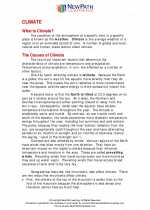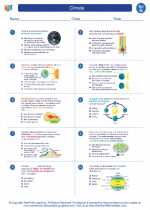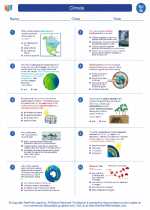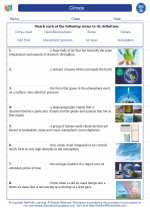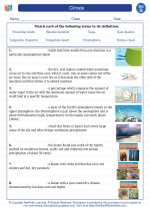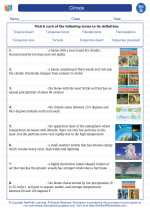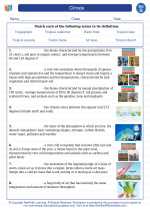Key Concepts:
- Glacier Formation: Glaciers form when snow accumulates and compresses over time, eventually turning into ice.
- Glacial Erosion: Glaciers erode the land through processes such as plucking and abrasion, creating features like U-shaped valleys and fjords.
- Glacial Deposition: As glaciers melt, they deposit sediment in the form of moraines, drumlins, and eskers.
- Glacial Landforms: Glaciers give rise to distinctive landforms including cirques, aretes, and horns, as well as glacial lakes and erratic boulders.
- Effect of Climate Change: Climate change has a significant impact on glacial activity, leading to the retreat of glaciers and changes in the landscape.
Study Guide:
1. What is a Glacier?
A glacier is a large mass of ice that moves slowly over land due to its own weight.
2. How do Glaciers Form?
Glaciers form from the compaction and recrystallization of snow over time, which eventually turns into ice.
3. What are the Processes of Glacial Erosion?
Glacial erosion includes processes such as plucking, where rocks are lifted and carried away by the glacier, and abrasion, where the glacier grinds and polishes the underlying rock.
4. What are the Landforms Created by Glacial Erosion?
Glacial erosion creates landforms such as U-shaped valleys, fjords, and truncated spurs.
5. How do Glaciers Deposit Sediment?
As glaciers melt, they deposit sediment in the form of moraines (ridges of till), drumlins (elongated hills), and eskers (long ridges of gravel).
6. What are Some Distinctive Glacial Landforms?
Distinctive glacial landforms include cirques (bowl-shaped depressions), aretes (narrow ridges), horns (sharp peaks), and erratic boulders (large rocks transported and deposited by glaciers).
7. What is the Impact of Climate Change on Glacial Activity?
Climate change has led to the retreat of glaciers and the formation of glacial lakes, as well as changes in the distribution of plant and animal species in glacial regions.
